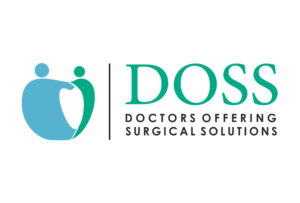Understanding Hernia: Types, Grades, and Treatment Options
BlogHernia, a common health condition, occurs when an internal part of the body pushes through a weakness in the muscle or surrounding tissue wall. In this blog, we will take a look at the different types of Hernia and its grades.
So let’s get started.
What is a Hernia?
A hernia is a condition where an internal organ or other body part protrudes through the wall of muscle or tissue that normally contains it. Typically, hernias develop when there is a weakness or hole in the muscular wall, allowing tissues or organs to bulge through.
Types of Hernia
Although there is no mention of the types of Hernia in the medical literature, doctors classify it into two categories:
Umbilical Hernia
This type of hernia is characterized by a part of the small intestine or fatty tissue protruding near the navel (umbilicus). This occurs when the muscles around the navel area remain open or do not close properly.
Umbilical hernias are common in infants but can also occur in adults, often due to strain, obesity, or pregnancy.
Inguinal Hernia
The most common type of hernia, inguinal hernias occurs when a part of the small intestine or fatty tissue protrudes through a weak spot in the lower abdominal muscles. This often happens in the inguinal canal, where the abdomen meets the top thigh.
Now let’s take a look at the various grades of Hernia.
Grades of Hernia
The grading of hernias is an essential aspect of diagnosis and treatment. It offers a proper understanding of the severity of the condition. In this way, it can help in determining the proper course of treatment.
Grade I: Initial Stage
Cough Impulse Test: In this early stage, a hernia is often detected through a cough impulse test. During this test, a healthcare provider observes the abdominal area for any protrusions or bulges that become more apparent when the patient coughs. This reaction is a key indicator of a hernia at its initial stage.
Minimal Symptoms: Patients with a Grade I hernia may experience mild discomfort or notice a small bulge, particularly when straining or coughing. However, the hernia is typically reducible – meaning it can be pushed back into the abdomen manually or may retract on its own.
Grade II: Progression
Visible Bulge: At this stage, the hernia becomes more pronounced. Patients can notice a visible bulge or lump in the affected area, which may be more evident when standing, lifting heavy objects, or engaging in activities that increase abdominal pressure.
Increased Discomfort: While not necessarily painful, the bulge may cause discomfort, especially during physical activities. At this stage, medical consultation is recommended to evaluate the need for intervention.
Grade III: Advanced Hernia
Irreducible Hernia: This grade signifies a more advanced stage, where the herniated tissue (often part of the omentum or intestine) becomes trapped and cannot be pushed back. This condition is known as an irreducible or incarcerated hernia.
Surgical Consideration: Due to the risks associated with incarcerated hernias, such as potential blood supply loss to the trapped tissue, surgical intervention is often recommended. Delay in treatment can lead to complications like strangulation, where the blood supply to part of the intestine is cut off.
Grade IV: Complicated Hernia
Severe Symptoms and Risks: The most severe form of hernia, this grade involves significant pain, and the herniated tissue forms a noticeable lump. The risk of strangulation and tissue necrosis is high in this stage.
Urgent Surgical Requirement: Immediate medical attention and surgical intervention are crucial in Grade IV hernias to prevent life-threatening complications. Depending on the case, various surgical methods, including open surgery or laparoscopic techniques, may be employed.
Understanding the grading of hernias is vital for timely and effective treatment. If you suspect you have a hernia or notice any related symptoms, it’s important to seek medical advice promptly.
Treatment and Management of the Hernia
Non-Surgical Approaches
- Lifestyle Changes: For less severe hernias, especially in the early stages, lifestyle modifications can be beneficial. This includes losing weight, adopting a healthier diet, and avoiding heavy lifting or straining that might exacerbate the hernia.
- Supportive Trusses or Belts: These devices can help in containing the hernia and providing support, especially for those who may not be immediate candidates for surgery. However, it’s important to note that these are temporary solutions and do not correct the hernia.
- Watchful Waiting: In cases where the hernia is small and not causing significant discomfort, a doctor might recommend a “watchful waiting” approach. This involves monitoring the hernia for any changes or increase in symptoms before deciding on further treatment.
Surgical Interventions
- Open Hernia Repair (Herniorrhaphy): This traditional surgical method involves making an incision in the groin area, pushing the protruding tissue back into the abdomen, and then stitching the weakened area. Recovery time may vary, and there’s usually a period of restricted activity post-surgery.
- Laparoscopic Surgery (Hernioplasty): This is a minimally invasive procedure where the surgeon makes small incisions and uses a laparoscope (a thin tube with a camera) to repair the hernia with mesh. This approach often allows for a quicker recovery and less postoperative pain compared to open surgery.
- Choosing the Right Technique: The choice between open surgery and laparoscopic surgery depends on various factors, including the hernia’s location, size, the patient’s overall health, and the surgeon’s expertise. Some complex or large hernias may require open surgery for a more comprehensive repair.
Aftercare and Recovery
- Post-Surgical Care: Postoperative care is critical for recovery. This includes following the doctor’s instructions regarding wound care, activity level, and recognizing signs of potential complications.
- Physical Therapy: Sometimes, physical therapy is recommended post-surgery to strengthen the abdominal muscles and prevent recurrence.
Parting Thoughts
Hernias, while common, can range from mild to severe and require proper medical attention. Understanding the types and grades of hernias is essential for timely diagnosis and treatment.
If you suspect a hernia, consulting with a healthcare provider for an accurate diagnosis and appropriate treatment plan is crucial.
Remember, early intervention can prevent complications and ensure better health outcomes. So if you are experiencing any symptoms of Hernia, reach out to our experts right away. The more quickly you act, the better your chances of treatment are.


 +919011100010
+919011100010 


